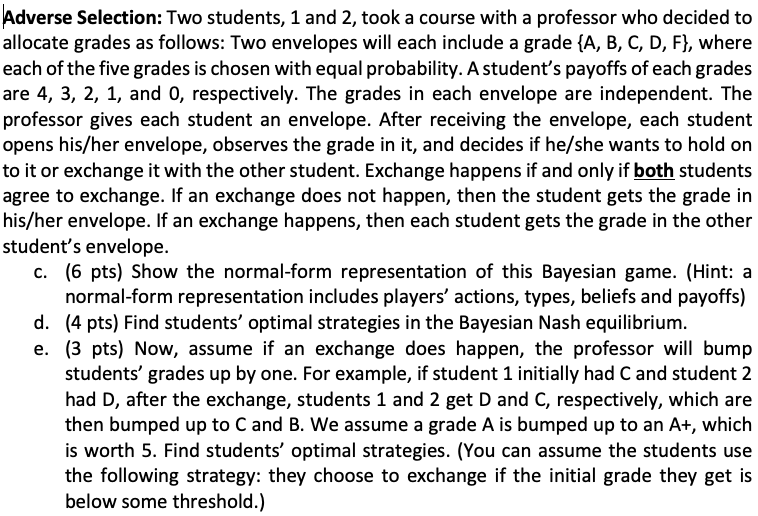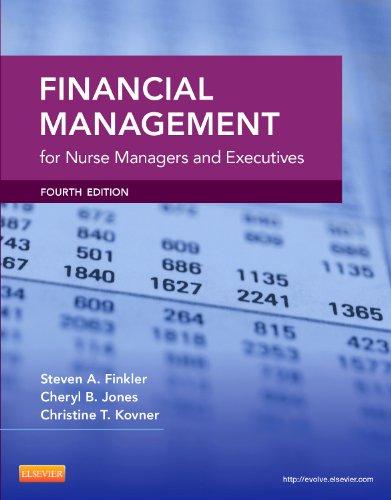
Adverse Selection: Two students, 1 and 2, took a course with a professor who decided to allocate grades as follows: Two envelopes will each include a grade (A, B, C, D, Fl, where each of the five grades is chosen with equal probability. A student's payoffs of each grades are 4, 3, 2, 1, and 0, respectively. The grades in each envelope are independent. The professor gives each student an envelope. After receiving the envelope, each student opens his/her envelope, observes the grade in it, and decides if he/she wants to hold on to it or exchange it with the other student. Exchange happens if and only if both students agree to exchange. If an exchange does not happen, then the student gets the grade in his/her envelope. If an exchange happens, then each student gets the grade in the other student's envelope. (6 pts) Show the normal-form representation of this Bayesian game. (Hint: a normal-form representation includes players' actions, types, beliefs and payoffs) c. d. (4 pts) Find students' optimal strategies in the Bayesian Nash equilibrium. e. (3 pts) Now, assume if an exchange does happen, the professor l bump students' grades up by one. For example, if student 1 initially had C and student 2 had D, after the exchange, students 1 and 2 get D and C, respectively, which are then bumped up to C and B. We assume a grade A is bumped up to an A+, which is worth 5. Find students' optimal strategies. (You can assume the students use the following strategy: they choose to exchange if the initial grade they get is below some threshold.) Adverse Selection: Two students, 1 and 2, took a course with a professor who decided to allocate grades as follows: Two envelopes will each include a grade (A, B, C, D, Fl, where each of the five grades is chosen with equal probability. A student's payoffs of each grades are 4, 3, 2, 1, and 0, respectively. The grades in each envelope are independent. The professor gives each student an envelope. After receiving the envelope, each student opens his/her envelope, observes the grade in it, and decides if he/she wants to hold on to it or exchange it with the other student. Exchange happens if and only if both students agree to exchange. If an exchange does not happen, then the student gets the grade in his/her envelope. If an exchange happens, then each student gets the grade in the other student's envelope. (6 pts) Show the normal-form representation of this Bayesian game. (Hint: a normal-form representation includes players' actions, types, beliefs and payoffs) c. d. (4 pts) Find students' optimal strategies in the Bayesian Nash equilibrium. e. (3 pts) Now, assume if an exchange does happen, the professor l bump students' grades up by one. For example, if student 1 initially had C and student 2 had D, after the exchange, students 1 and 2 get D and C, respectively, which are then bumped up to C and B. We assume a grade A is bumped up to an A+, which is worth 5. Find students' optimal strategies. (You can assume the students use the following strategy: they choose to exchange if the initial grade they get is below some threshold.)







